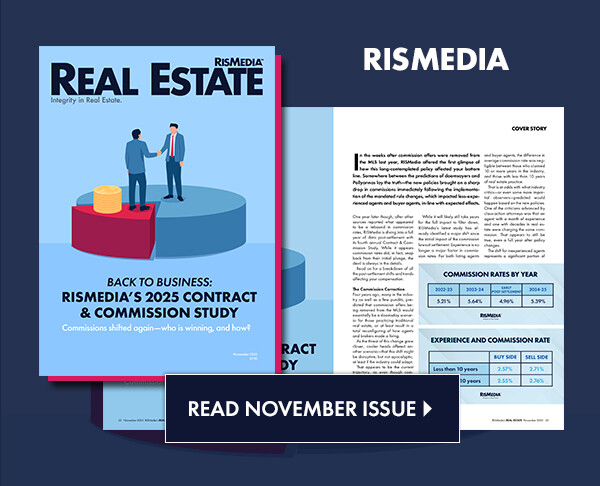The latest Primary Mortgage Market Survey® from Freddie Mac found the 30-year mortgage rate is averaging 6.72%. For most prospective homebuyers, that rate is far too high to enter the market, according to the latest findings in Bankrate’s 2025 Mortgage Rates Sentiment Survey.
“The spring 2025 home-buying season turned out to be historically slow, and these findings offer some insight,” said Bankrate Housing Market Analyst Jeff Ostrowski—the survey sampled 2297 respondents (including 1,198 current homeowners) from June 5-9. One of the key findings of the data is that “Americans long for pandemic-era mortgage rates.”
Just over half of surveyed respondents, 51%, said they would be uncomfortable with purchasing a home regardless of what happens with mortgage rates—an increase from 28% in the 2024 survey. Fifty-four percent of homeowners said that there’s no interest rate that would make them comfortable selling this year.
As for where buyers do want mortgage rates to be: 40% of respondents said they need rates below 6% for them to be comfortable buying, 37% said they need rates to drop below 5% and 27% said they want rates less than 4%.
McBride notes that, due to how long many buyers have held out for lower mortgage rates, “what constitutes ‘lower’ has evolved. Many that were pining for a return to 3 percent or 4 percent rates would probably jump for joy if rates fell into the 5s.”
Regardless, right now, only 1% are comfortable buying at current rates of 6% or higher, and less than 1% of respondents are interested in refinancing their mortgage right now. Three percent of homeowners say they would be comfortable with selling a home this year.
How brokers are seeing the mortgage lock-in effect
RISMedia spoke with several real estate brokers about how hard the lock-in effect is hitting their local markets. Brokers confirmed local homebuyers are feeling locked-in, including Troy Reierson, CEO of Berkshire Hathaway HomeServices Arizona, California, Nevada Properties, who cited a “clear lock-in effect” in covered cities such as Phoenix and Las Vegas.
“Many homeowners with sub 4% mortgage rates are hesitant to sell and trade into today’s higher rates, even if they’ve outgrown their home,” says Reierson. “It’s creating low inventory, which is definitely slowing market movement, especially in the mid-range price points.”
Reierson cited a story from one of his agents, Allen Zeller, working with a couple in Sun City, Arizona who backed out of downsizing their home due to the change in mortgage rates from when they bought.
“While their interest in downsizing is high, once they reviewed the current market and mortgage rates, they realized that financially, it just didn’t make sense. They were effectively ‘locked in’ not by their home, but by their low interest rate. Trading a 3% mortgage for something in the 6–7% range made the idea of downsizing far less appealing, especially when it would result in a smaller home and a higher monthly payment.”
Deb Miller, a senior broker at RE/MAX Professionals’ International Group based in the Denver metro area, says there is another sunk cost homebuyers are considering beyond mortgage rates.
“Many homeowners who refinanced during record-low rate periods also tapped into their equity to remodel and upgrade their homes. Now, they’re sitting in properties with customized features, low monthly payments and spaces that reflect their personal needs and lifestyle,” explained Miller. “For these owners, the idea of moving isn’t just about trading interest rates—it’s about weighing the time, cost, and disruption of remodeling again, as well as the challenge of finding a replacement home they’ll love just as much.”
On the other side of the country, Mark T. Donnelly—president of Long Island Board of Realtors (LIBOR) and a licensed associate broker with Howard Hanna—noted findings such as a longer median tenure of homeownership compared to the 2000s as well as high rates of homeowner equity.
“Today’s market reflects a substantial shift in homeowner behavior and financial standing. We’re seeing sellers stay in their homes longer—tenure has increased to a median of 10 years, up from just six years in the early 2000s. That’s a result of what many are calling the ‘lock-in effect,’ with homeowners reluctant to give up their low mortgage rates.
“This dynamic is creating challenges for first-time buyers. With limited inventory and intense competition—especially from well-capitalized buyers—only 30% of recent buyers were purchasing for the first time,” said Donnelly, citing a figure found by the National Association of Realtors®,
Donnelly noted, though, that current rates still remain below 7% and both agents and loan officers can still find success with strategic thinking.
“Successful agents are adapting by sharpening their consultation skills—asking better questions to understand each client’s unique goals and tailoring strategies accordingly. They’re also deepening their collaboration with mortgage professionals to ensure a seamless experience for buyers and sellers alike,” said Donnelly. “When it comes to potential sellers, agents are doing a better job communicating the benefits of the substantial equity many homeowners have built, and how that equity can be leveraged to achieve future real estate objectives.”
For the full Bankrate survey, click here.












